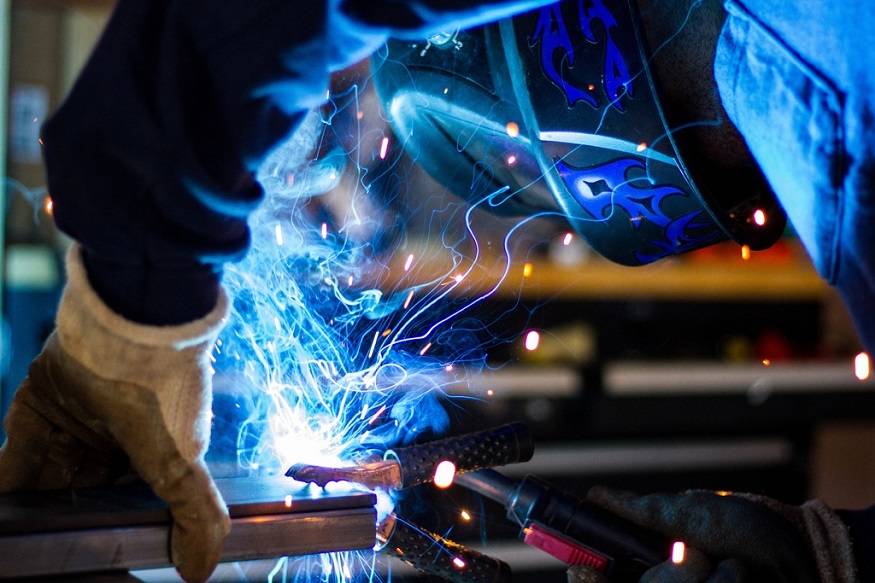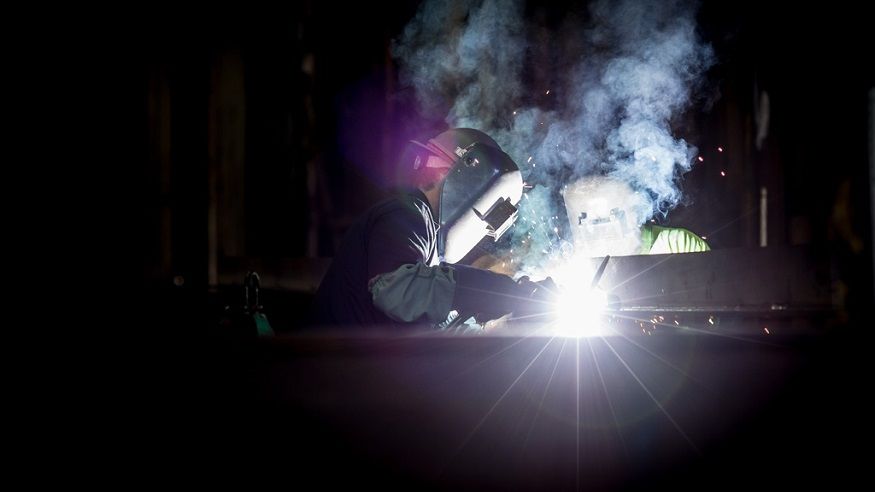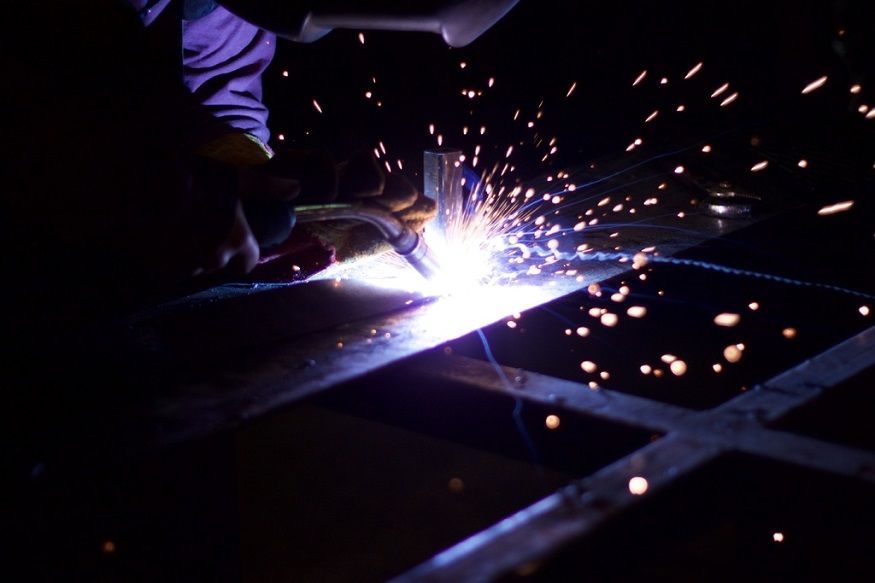Different types of welding and what they are used for
Welding is a trade that has been around for thousands of years in one form or another and is essentially the joining together of two metals. The welding process involves a welding power source to generate an electric arc to melt the parent material being welded as well as any consumable being used. This then bonds separate individual metals together.
The earliest form of welding was known as forge welding and was carried out by blacksmiths who would join iron and steel by heating and hammering and for a long time, this was the only viable welding technique.
This all changed in the 19th century when new methods were developed, all of which have their own advantages and disadvantages.
What is welding and why is it done?

Welding is a fabrication process, one of many used here at SRS, that uses high temperatures to melt and fuse metal together. Pressure can also be added to the process or can be used exclusively, in order to produce a weld.
Where welding differs from other bonding methods such as soldering, or brazing is that welding involves the melting of the base metal as well as the joining metal. Soldering and brazing can therefore be carried out at lower temperatures.
Welding can also involve the use of a filler material which provides a ‘filler’ or pool of molten material that helps to facilitate the formation of a strong bond between the two metals.
Here are SRS, welding is just one of the techniques used by our experience fabrication division along with other techniques such as cutting, bending, forming, and machining. All these techniques are part of our custom metal fabrication offering and you can read more about our services on our metal fabrication page.
What are the different types of welding and what are they used for?
Today, there are many different types of welding process and all have their own advantages and disadvantages. Some of the most common types of welding include:
MIG Welding
Perhaps the easiest form of welding, especially for those new to welding, is MIG welding, which is also known as Gas Metal Arc Welding (GMAW). It is a process whereby an electric arc forms between a consumable mig wire and the work piece which heats those materials causing them to melt and form a molten metal puddle which joins together. MIG welding is a simple, fast and widely used process and is typically used by DIY enthusiasts who don’t want to spend thousands on expensive equipment. MIG welding is considered the best technique for most steel applications.
Stick Welding
Stick welding is also a simple form of welding and is therefore a common welding technique for individuals and commercial applications. The technical term for stick welding is Shield Metal Arc Welding (SMAW) and it derives its ‘stick’ name from one of the materials used in the process. Stick welding is also sometimes referred to as arc welding and is one of the strongest types of weld. Stick welding is the only technique that can be used on cast iron and also works on dirty materials and under harsh weather conditions.
TIG Welding
Gas Tungsten Arc Welding (GTAW), generally referred to as TIG, is an arc welding process that uses a tungsten electrode to deliver the electric current to the weld pool. This process also requires a shielding gas, generally argon, in order to protect the weld metal from atmospheric contamination and prevent oxidisation. TIG is known for producing the highest quality welds of all techniques, especially when it comes to thin metals. Whilst it is a versatile technique, it’s also notoriously difficult and requires two hands – one to feed the rod and the other to hold the TIG torch. TIG welding is the most commonly used technique for aluminium welding as it’s a soft metal than cannot be exposed to too much heat.
Other types of welding technique include:
- Flux Welding – Cored Arc Welding (FCAW)
- Energy Beam Welding (EBW)
- Atomic Hydrogen Welding (AHW)
- Gas Tungsten-Arc Welding
- Plasma Arc Welding
Fabrication using welding
SRS has fast become one of New Zealand’s most trusted high-end metal fabricators, and it’s our end-to-end service that makes us such a great option for all your fabrication needs.
Custom metal fabrication is the process of cutting, moulding or shaping raw or semi-finished metal to create an end product – rather than assembling it from ready-made components.
At SRS, our fabrication process is completely bespoke, and depends on the metal selected as well as the desired end product. We use materials and designs crafted specifically for each individual project, so no two jobs will ever be the same.

Welding is an integral part of our bespoke fabrication process and we work with CAD designers and metal fabricators in order to establish your requirements and design and fabricate a piece that is right for you. If you already have your own design and working drawing created, we are happy to work with you to realised your drawing and bring them to life through our fabrication services.
Over the past four years, SRS Group has brought a number of complicated fabrication concepts to life, predominantly utilising mild steel, aluminium, corten and stainless steel, but also occasionally the likes of brass and copper. We can work with you to ensure you select the best possible material to reach the desired outcome of your project.
Our welding services are comprehensive. Pieces of metal can be any shape or size, making it a popular choice for a wide range of metal fabrication needs. Our on-site welding service extends to Stick Welding, MIG Welding and TIG Welding.
Talk to the team about your custom metal fabrication job
Hopefully this has provided you with some more background to the purpose of welding and how we integrate various techniques into our custom fabrication solutions. Talk to one of the team today about your commercial or residential fabrication needs.

